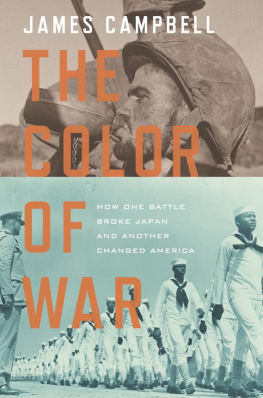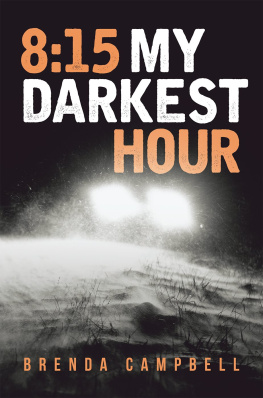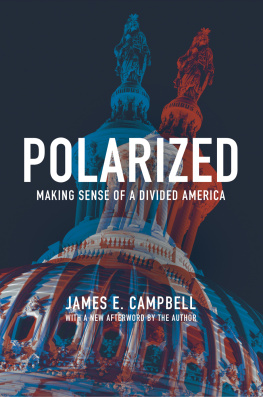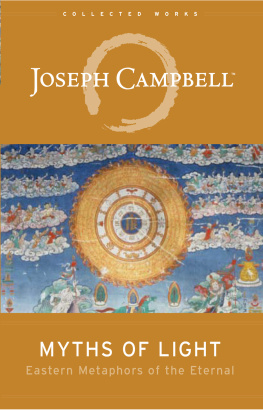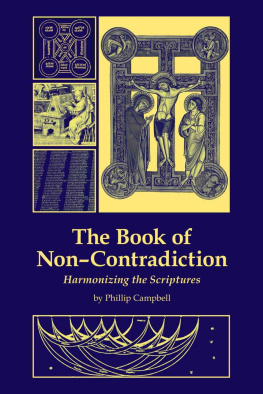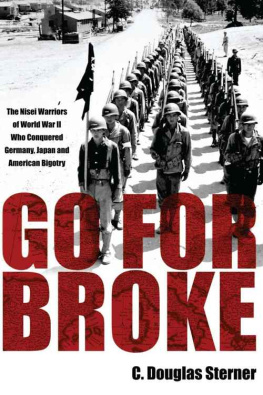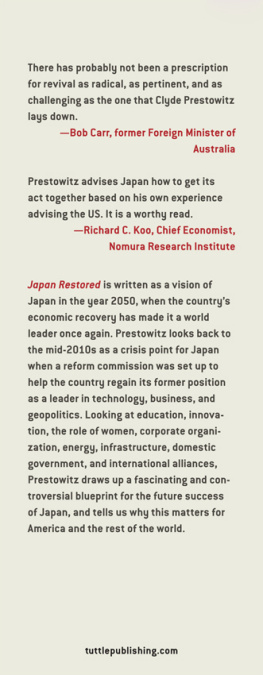J. Campbell - The Color of War - How One Battle Broke Japan, Another Changed America
Here you can read online J. Campbell - The Color of War - How One Battle Broke Japan, Another Changed America full text of the book (entire story) in english for free. Download pdf and epub, get meaning, cover and reviews about this ebook. year: 2012, publisher: Crown Publishers, genre: History. Description of the work, (preface) as well as reviews are available. Best literature library LitArk.com created for fans of good reading and offers a wide selection of genres:
Romance novel
Science fiction
Adventure
Detective
Science
History
Home and family
Prose
Art
Politics
Computer
Non-fiction
Religion
Business
Children
Humor
Choose a favorite category and find really read worthwhile books. Enjoy immersion in the world of imagination, feel the emotions of the characters or learn something new for yourself, make an fascinating discovery.
- Book:The Color of War - How One Battle Broke Japan, Another Changed America
- Author:
- Publisher:Crown Publishers
- Genre:
- Year:2012
- Rating:5 / 5
- Favourites:Add to favourites
- Your mark:
- 100
- 1
- 2
- 3
- 4
- 5
The Color of War - How One Battle Broke Japan, Another Changed America: summary, description and annotation
We offer to read an annotation, description, summary or preface (depends on what the author of the book "The Color of War - How One Battle Broke Japan, Another Changed America" wrote himself). If you haven't found the necessary information about the book — write in the comments, we will try to find it.
J. Campbell: author's other books
Who wrote The Color of War - How One Battle Broke Japan, Another Changed America? Find out the surname, the name of the author of the book and a list of all author's works by series.
The Color of War - How One Battle Broke Japan, Another Changed America — read online for free the complete book (whole text) full work
Below is the text of the book, divided by pages. System saving the place of the last page read, allows you to conveniently read the book "The Color of War - How One Battle Broke Japan, Another Changed America" online for free, without having to search again every time where you left off. Put a bookmark, and you can go to the page where you finished reading at any time.
Font size:
Interval:
Bookmark:

Copyright 2012 by James Campbell
All rights reserved.
Published in the United States by Crown Publishers,
an imprint of the Crown Publishing Group,
a division of Random House, Inc., New York.
www.crownpublishing.com
CROWN and the Crown colophon are registered trademarks of Random House, Inc.
Library of Congress Cataloging-in-Publication Data
Campbell, James.
The color of war: how one battle broke Japan and another changed America / James Campbell. 1st ed.
p. cm.
1. Port Chicago Mutiny, Port Chicago, Calif., 1944. 2. Port Chicago Mutiny Trial, San Francisco, Calif., 1944. 3. World War, 19391945Participation, African American. 4. United States. NavyAfrican AmericansHistory20th century. 5. World War, 19391945CampaignsNew Guinea. I. Title.
D810.N4C36 2012
940.545308996073079463dc23 2011023913
eISBN: 978-0-307-46123-0
Maps by Joe LeMonnier
Jacket design by Gabriele Wilson
Jacket photographs: (top) W. Eugene Smith/Time & Life Pictures/Getty Images; (bottom) Schomburg Center, NYPL/Art Resource, NY
v3.1_r1
Elaine DeGaetano Harvey
I believe as long as we allow conditions to exist that make for second-class citizens, we are making of ourselves less than first-class citizens. D WIGHT D. E ISENHOWER
CONTENTS
A GUIDE TO THE BOOKS MAJOR CHARACTERS
U.S. COMMAND STRUCTURE Admiral Ernest King: commander in chief, United States Fleet and Chief of Naval Operations Admiral Chester Nimitz: commander of the Pacific Fleet Admiral Raymond Spruance: commander of the United States 5th Fleet (originally the Central Pacific Force) Admiral Richmond Kelly Turner: commander of the Joint Expeditionary Force and Northern Attack Force and commander of the amphibious landing General Holland Howlin Mad Smith: commander V Amphibious Corps and commander of all expeditionary troops General Douglas MacArthur: commander in chief Southwest Pacific Area General George Marshall: U.S. Army chief of staff Frank Knox: secretary of the Navy James Forrestal: secretary of the Navy following Knoxs death Vice Admiral Randall Jacobs: chief of naval personnel SAIPAN Second Lieutenant Carl Roth: E Company, 23rd Regiment, 4th Marine Division Gunnery Sergeant Emberg Townsley: E Company Robert Graf: E Company, from Ballston Spa, New York Dick Crerar: E Company, Grafs buddy Bill More: E Company, Grafs buddy Lieutenant James Stanley Leary Jr: G Company, 23rd Regiment, 4th Marine Division, from Ashokie, North Carolina Sergeant Jack Campbell: G Company, platoon sergeant Carl Matthews: G Company, Gold Dust Twin, from Hubbard, Texas Richard Freeby: G Company, Gold Dust Twin, from Quanah, Texas Wendell Nightingale: G Company, from Skowhegan, Maine Sergeant John Rachitsky: Bastard Battalion, 29th Marines Frank Chick Borta: Bastard Battalion, 29th Marines, from Chicago Glen Pluto Brem: Bastard Battalion, 29th Marines, from Gilroy, California Richard Carney: Bastard Battalion, 29th Marines, from Bronx, New York Milt Lemon: Bastard Battalion, 29th Marines, from Texas Panhandle MONTFORD POINT Edgar Lee Huff: One of Montford Points first black recruits, from Gadsden, Alabama Colonel Samuel Woods: commanding officer of Montford Point PORT CHICAGO Black Seamen George Booth: carpenter striker, Division #4, from Detroit Sammie Lee Boykin: carpenter striker, ammunition handler and winch operator, Division #1, from Bessemer, Alabama Percy Robinson, Jr.: hold boss and winch operator, Division #4, from Chicago Spencer Sikes: boxcar inspector and shore patrol, from West Palm Beach, Florida Joe Small: cadence caller and winch operator, Division #4, from Middlesex County, New Jersey White Officers Lieutenant Ernest Delucchi: head of Division #4 Captain Nelson Goss: commanding officer at Mare Island and Port Chicago Lieutenant Commander Alexander Holman: head loading officer and officer in charge of training Captain Merrill Kinne: officer-in-charge of the Port Chicago Naval Magazine Lieutenant Commander Glen Ringquist: assistant loading officer Lieutenant Richard Terstenson: assistant loading officer Lieutenant James Tobin: head of Division #2 Lieutenant Raymond Robert Bob White: junior officer in charge of Division #3 KEY FIGURES OF ALLEGED MUTINY AND TRIAL Black Seamen Ollie Green: witness for the defense Joseph Gray: witness for the prosecution Edward Longmire: witness for the defense Alphonso McPherson: witness for the defense Edward Stubblefield: witness for the prosecution Joe Small: witness for the defense Thurgood Marshall: chief counsel of the NAACPs Legal and Educational Defense Fund White Officers Lieutenant Commander Charles Bridges: executive Officer Mare Island Naval Barracks Lieutenant Commander James Coakley: head of the prosecution team Lieutenant Commander Jefferson Flowers: chaplain, Mare Island Rear Admiral Hugo Osterhaus: head of the seven-member general court martial Lieutenant Gerald Veltmann: head of the defense team Rear Admiral Carleton Wright: commandant of the Twelfth Naval District

FOREWORD
T he inspiration for the African American portion of this story dates back to 2005 when I began writing The Ghost Mountain Boys . While researching that book, I first found out about the 96th Engineers, a group of black laborers that braved snakes, malaria, endless rain, and some of the roughest terrain on the planet to build roads, airfields, and piers throughout New Guinea. En route to the island, their ship docked in Brisbane and Townsville, Australia. In both places they were refused entrance to the city. The story of the 96th is told by one of its white officers, Captain Hyman Samuelson.
If not for Captain Samuelson, the travails and accomplishments of the 96th might have gone unmentioned. Black narratives about the war, and historical accounts of the contributions of black servicemen to it, are hard to find. According to historian Ulysses Lee, who conducted a study titled The Employment of Negro Troops for the U.S. Center of Military History, Negro units in the Pacific were primarily quartermaster, port, and engineer types, attached to divisions, engineer special brigades, construction groups, or boat and shore battalions. In light of General Douglas MacArthurs comment that the war in the Pacific was an engineers war, one in which military support groups played a critical role, the lack of black history struck me as conspicuous. Certainly the extraordinary victories could not have happened without the support of a great war machine and the forgotten sacrifices of the men behind the scenes.
African American servicemen performed their jobs ably. Then why was there not a larger record of their achievements, I wondered. Certainly a pervasive racism accounted for the military establishments historic reluctance to use black troops in battle. Perhaps much of that same racism prevailed when chronicling the history of the Good War. Perhaps, too, it was a function of mythology. The reality of the black experience does not conform nicely with the celebrated stories of white heroism and sacrifice.
Black servicemen were often treated as nuisances and troublemakers. Soldiers were court-martialed, hanged, beaten, mugged, belittled, and forced to endure the indignities and humiliations of Jim Crow wherever they went. If, as William Manchester writes, the war provided a tremendous impetus to egalitarianism, that egalitarianism was resisted by both the military and the country at large. The Baltimore Afro-American published an editorial saying that the war would help blacks to breathe the air of freedom. The truth was that African Americans had to fight fiercely for the advances they made. Perhaps nothing captures the reality of that ordeal like the story of the Port Chicago Naval Ammunition Depot.
Font size:
Interval:
Bookmark:
Similar books «The Color of War - How One Battle Broke Japan, Another Changed America»
Look at similar books to The Color of War - How One Battle Broke Japan, Another Changed America. We have selected literature similar in name and meaning in the hope of providing readers with more options to find new, interesting, not yet read works.
Discussion, reviews of the book The Color of War - How One Battle Broke Japan, Another Changed America and just readers' own opinions. Leave your comments, write what you think about the work, its meaning or the main characters. Specify what exactly you liked and what you didn't like, and why you think so.

